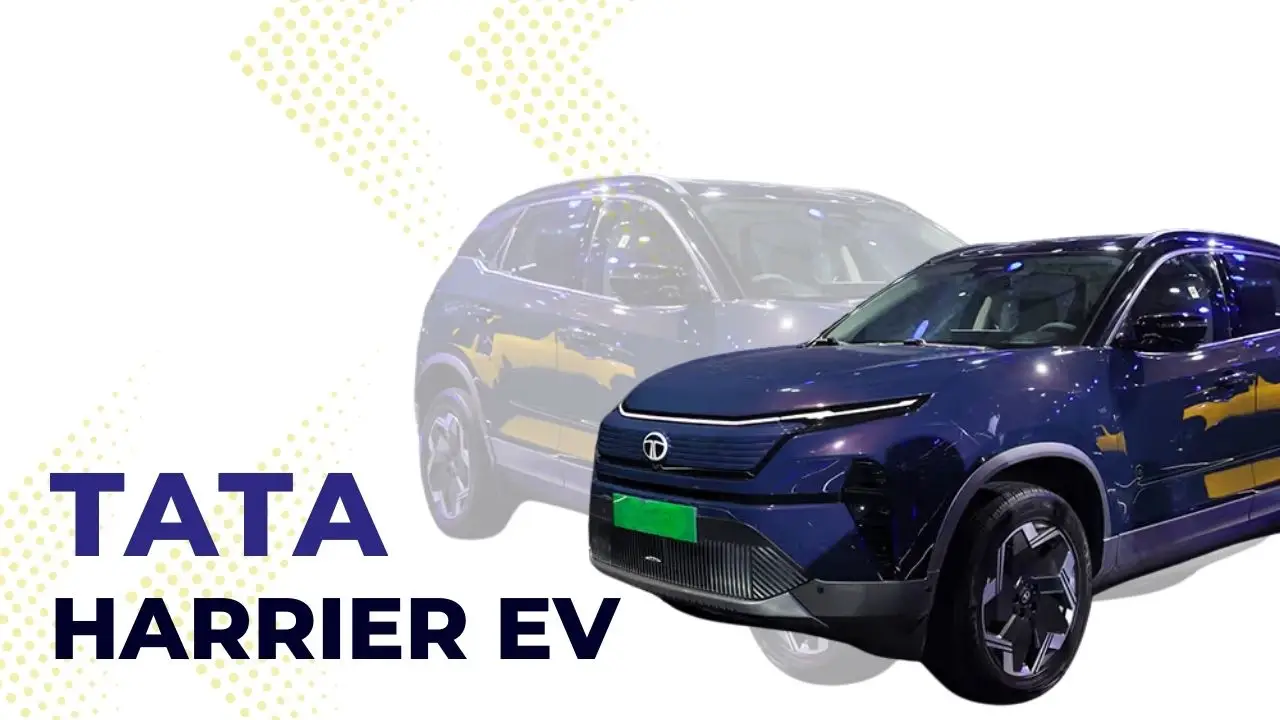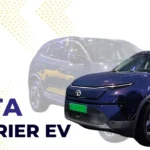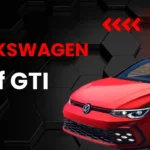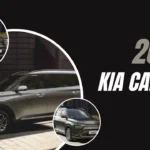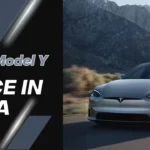With the much-awaited Tata Harrier EV, Tata Motors is poised to transform the Indian electric vehicle industry once more. Tata wants to add a bigger, more upscale electric SUV to its lineup of EVs in light of the success of the Nexon EV and Punch EV.
The Tata Harrier EV, which is based on the well-liked Harrier SUV, will have a sustainable electric drivetrain, cutting-edge technology, and a sturdy construction. This post explores the fundamentals of the Tata Harrier EV, including its features, design, anticipated specs, launch schedule, and the reasons EV aficionados are so excited about it.
Harrier EV Design and Interior
The Harrier EV and its ICE sibling have a similar design. To modify its appearance, Tata engineers will make several adjustments. A closed-off front grille and a redesigned bumper with vertical slats like those of the Curvv EV are among the EV-specific modifications.
The SUV is equipped with Welcome Function LED daytime running lights. Additionally, the electric SUV has freshly designed wheels that are optimized for aerodynamics. With a few exceptions, the rear design will also resemble that of the Tata Harrier ICE. It has a significantly modified bumper with a front-like vertical slat pattern and linked LED taillights with a welcome function.
The inside design of the Tata Harrier EV will resemble that of the ICE model. It will include a 10.25-inch digital driver’s display, a 12.3-inch touchscreen infotainment system with wireless compatibility for Apple CarPlay and Android Auto, and a panoramic sunroof. The SUV will have features including vehicle-to-load (V2L) and vehicle-to-charge (V2C), ventilated front seats, and a 10-speaker audio system from JBL.
Seven airbags, ABS with EBD, a 360-degree camera, all-four-disc brakes, electronic parking brake with auto hold, electronic stability control (ESC), TPMS, and front and rear parking sensors are all standard on the Harrier EV. With features like adaptive cruise control, automated emergency braking, lane assist, and more, the electric SUV has LEVEL 2 ADAS technology.
Tata Harrier Electric Expected Range & Specs
The active. EV architecture, on which the Tata Harrier Electric will be built, is adaptable enough to support larger battery packs and a variety of body shapes. The Punch EV and Curvv EV are presently powered by this platform. Although Tata has not disclosed the details, it is anticipated that the SUV would have a range of more than 500 kilometers between charges. According to rumors, the electric SUV will include a dual-motor AWD system and a 75kWh battery pack.
Battery & Motor
The Harrier will have two motors for all-wheel drive, making it the first Tata EV to do so. This indicates that the front and rear axles will each have a single motor. Regarding the battery, we anticipate a 60–70 kWh capacity, which should allow for a 500–600 km real-world driving range when fully charged. Additionally, there’s a good chance that Tata will provide buyers the choice between an all-wheel drive and a two-wheel drive system.
Tata Harrier EV Launch Date
The Tata Harrier EV is anticipated to go on sale on June 10, 2025. This is the current assumption based on the information that is currently available, while the precise launch date is still susceptible to change. It is anticipated that the Harrier EV would be an SUV that runs entirely on electricity and has an automated gearbox.
Tata Harrier EV Price
Tata has announced that the Harrier EV would be offered with both single and dual-motor versions, however, specifics regarding the variants have not yet been made public. An all-wheel-drive arrangement will be provided by the dual-motor configuration. It is anticipated to start at about ₹30 lakh (ex-showroom), which puts it in the high-end mid-size electric SUV market.
Conclusion
With its distinctive look, cutting-edge technology, and remarkable range, the Tata Harrier EV represents a major advancement in Tata Motors’ electric journey. With its dual-motor AWD choices, state-of-the-art safety technology, and anticipated June 2025 introduction, this electric SUV is poised to revolutionize high-end transportation in India. It’s a positive step in the direction of a smarter, greener automotive future.
